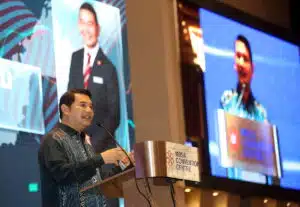KUALA LUMPUR, Aug 26 — The government and industry players in the semiconductor sectors must work closely to ensure the country can continue to produce the best talents in the industry in the future.
Economy Minister Rafizi Ramli said a culture of innovation can only be shaped if more new companies are started by founders of good young professionals and confident enough to strike on their own to add value and innovation to the industry as a whole.
“Many semiconductor companies have told me that they are willing to absorb fresh graduates and train them on the job so that they could learn about the intricacies of the industry and the technical skills required to succeed.

“This is an integral part of the puzzle of restructuring of our economy. Any economy where growth is consistent and sustained needs pronounced leaders who are ready to innovate at the cutting edge of technology.
“This is important if we were to pivot and focus well in the next value chain of the industry,” he said at the Malaysia Semiconductor Industry Association’s (MSIA) Merdeka Celebration 2023, earlier today.
Rafizi said Malaysia needs more people to take risks to build their products, teams and longer-term contracts, which will add to economic growth in the long run.
“I am glad we stand at this critical juncture for the semiconductor industry in this country. The future looks bright, and I hope our country can continue with your help and contribution to lead in this high-growth, high-value sector.
“While I may not spend too much time in the overall industry per se, one of my important focus areas is to make sure that we cultivate and groom future talents for your industry because that is key to the overall design to restructure the economy to its higher complexity,” he said.
Meanwhile, MSIA president Datuk Seri Wong Siew Hai said Malaysia is recognised as one of the primary semiconductor manufacturers in the global value chain, with 7.0 per cent of global semiconductor trade flowing through Malaysia and 13 per cent of backend semiconductor capacity located in the country.
“The opportunity is there for Malaysia. Investors are still attracted to the Malaysia narrative as evidenced by recent investment announcements like Infineon’s €5 billion (RM25 billion) investment, Texas Instruments (RM15 billion), TF-AMD (RM2 billion), Intel US$7.1 billion (RM30 billion), AT&S (RM8.5 billion), Bosch (RM1.6 billion), and many others.
“For labour productivity, the electrical and electronics (E&E) subsector recorded impressive growth in 2021, at 12 per cent, with RM198,437 in value-added per employment. The growth is the highest among the sub-sectors under the Productivity Nexus and it doubles the average national productivity of RM90,647. Also, the E&E industry’s average wage doubles the national average wage,” he said.
Even though the semiconductor industry has been around for more than 50 years in Malaysia, Wong said the industry is still considered a new economy and also a critical building block for the new emerging green economy.
“We look forward to working closely with the government in the New Industrial Master Plan 2030. We believe the E&E industry is the arrowhead which will lead the way forward for Malaysia into 2030, towards a nation that is prosperous and with high-paying jobs,” he added.
— Bernama




